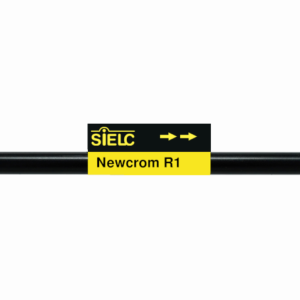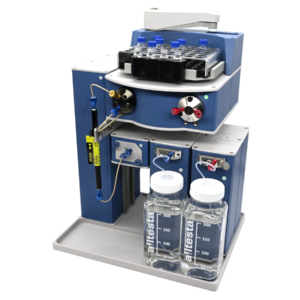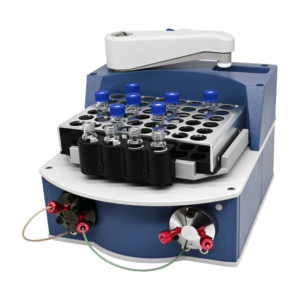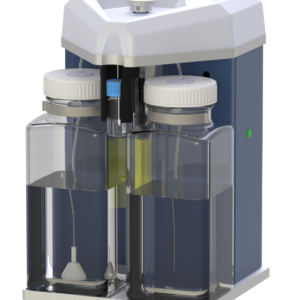HPLC Method for Piracetam, Levetiracetam on Newcrom R1 by SIELC Technologies
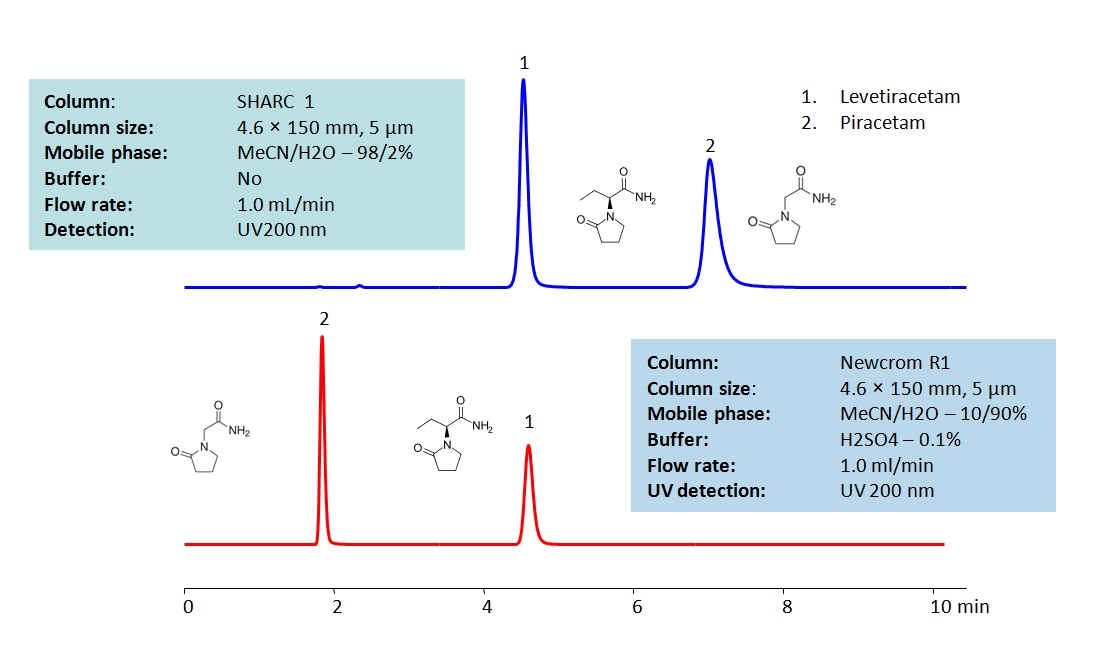
High Performance Liquid Chromatography (HPLC) Method for Analysis of Piracetam and Levetiracetam
Piracetam has been marketed as a treatment for myoclonus, vertigo, dyslexia, and sickle cell anemia. It is approved for use across many European countries, but is not approved by the FDA in the United States. It’s chemical formula is C6H10N2O2.
Levetiracetam, on the other hand, is an FDA Approved common treatment for generalized epilepsy and the prevention of seizures. It is currently unknown how exactly levetiracetam works as a treatment as it does not exhibit pharmacologic actions similar to other anticonvulsants. It’s chemical formula is C8H14N2O2
These racetams can be detected in the low UV regime. There are two effective methods for retaining, separating, and analyzing these compounds. The first uses a SHARC 1 hydrogen-bonding column and a mobile phase consisting of acetonitrile (MeCN) and water without a buffer. The second uses Newcrom R1 mixed-mode column and a mobile phase consisting of acetonirile (MeCN) and water with a sulfuric acid (H2SO4) buffer. Either analysis method can be UV detected at 200 nm with high resolution.
| Column | SHARC 1, 4.6×150 mm, 5 µm, 100A |
| Mobile Phase | MeCN/H2O -98/2% |
| Buffer | No |
| Flow Rate | 1.0 ml/min |
| Detection | UV 200 nm |
| Column | Newcrom R1, 4.6×150 mm, 5 µm, 100A |
| Mobile Phase | MeCN/H2O -10/90% |
| Buffer | H2SO4 – 0.1% |
| Flow Rate | 1.0 ml/min |
| Detection | UV 200 nm |
| Class of Compounds |
Drug, Racetam |
| Analyzing Compounds | Piracetam, Levetiracetam |
Application Column
SHARC 1
Column Diameter: 4.6 mm
Column Length: 150 mm
Particle Size: 5 µm
Pore Size: 100 A
Column options: dual ended
Newcrom R1
Column Diameter: 4.6 mm
Column Length: 150 mm
Particle Size: 5 µm
Pore Size: 100 A
Column options: dual ended
Piracetam


